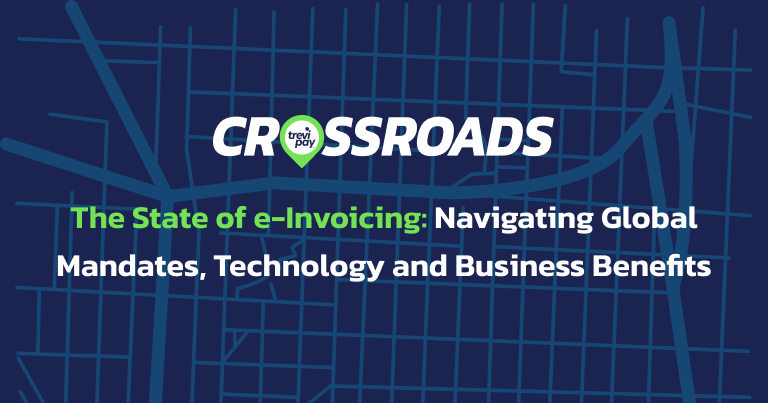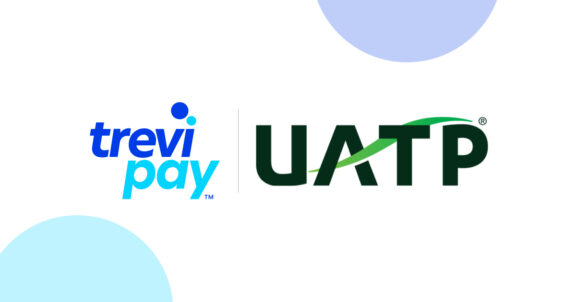Invoicing, a critical aspect of B2B commerce, has seen increasing demands for digital transformation due to large buyers and government mandates. At TreviPay Crossroads, industry experts gathered for a panel discussion on the current state of e-Invoicing and the growing complexities businesses face. Moderated by Dan Zimmerman, the panel featured key insights from Brandon Eibes of TreviPay, Paul Rogers of Vendorcom, James Norfor of b2buy and Brian Groome of KPMG.
A Global Push for e-Invoicing
One of the primary takeaways from the panel was the global nature of e-Invoicing, with mandates varying by country and region. James Norfor, CEO of b2buy, emphasized the progress in Australia and New Zealand, where governments have mandated e-Invoicing for all government agencies since 2022. “In Australia, the government’s mandate to process invoices within five days for eligible suppliers has driven significant uptake of e-Invoicing,” Norfor shared.
Brandon Eibes of TreviPay echoed the international complexity, noting that “even within the European Union, countries like Italy, France and Germany are at different stages of adopting e-Invoicing standards.” This patchwork of mandates highlights the need for businesses to stay agile and adaptive as new regulations unfold globally.
Beyond Compliance: Unlocking Business Value
While compliance with government mandates is a key driver of e-Invoicing adoption, the panel highlighted that businesses should view e-Invoicing as more than just a compliance exercise. It offers significant opportunities to streamline operations and drive revenue growth.
Paul Rogers, Chairman of Vendorcom, pointed out the real business upside, particularly in improving customer experience and operational efficiency. “For many businesses, e-Invoicing presents a chance to become more agile, improving their ability to deliver better customer experiences and reducing the complexity of financial processes,” Rogers said.
Brian Groome of KPMG added “what started as a tax compliance initiative has evolved into an opportunity to build more efficient, scalable processes across global organizations.” Groome emphasized that when done right, e-Invoicing can automate data flow, enhance transparency and even eliminate the need for certain tax returns by providing governments with real-time access to transaction data.
The Role of Technology in e-Invoicing
One of the major challenges discussed during the panel is the varying levels of technological adoption across different markets. While some businesses have fully embraced e-Invoicing through platforms like Xero and MYOB in Australia and New Zealand, others—particularly in the United States—are still adjusting to the shift.
At TreviPay, Eibes described how the company is helping businesses integrate e-Invoicing solutions seamlessly. “We’ve seen that when businesses fully integrate their invoicing systems with platforms like TreviPay, they experience a significant uptick in customer loyalty and spending. Some clients have seen a 30-50% increase in spending after e-Invoicing integration,” Eibes noted.
Flexibility and Scalability: Key to Successful Implementation
A recurring theme of the discussion was the need for flexibility in e-Invoicing solutions, especially as businesses scale or operate in multiple regions. “The beauty of e-Invoicing lies in its scalability,” said Rogers. “But for businesses to harness this fully, they need solutions that can accommodate everything from small, one-off invoices to large, complex transactions.”
Brian Groome also noted the importance of building a unified, global strategy for e-Invoicing that can handle regional differences in mandates. “Larger organizations must think about how they can standardize their processes while still meeting the diverse regulatory requirements of each country they operate in,” Groome advised.
Looking Ahead: The Future of e-Invoicing
The panel concluded with a look toward the future of e-Invoicing, both in terms of regulatory expansion and technological advancements. As governments around the world continue to adopt e-Invoicing mandates, the technology and processes supporting this transformation will only grow more sophisticated.
Rogers discussed how open banking could play a key role in the future of e-Invoicing, enabling smoother, faster payments between buyers and suppliers. “The integration of invoicing with open banking and payment tokens could revolutionize how businesses handle payments,” Rogers predicted.
Eibes also highlighted TreviPay’s role in leading this charge: “As businesses move toward digital-first financial operations, TreviPay’s flexible, scalable solutions help our clients adapt and thrive in the evolving e-Invoicing landscape.”
Key Takeaways
- Global Complexity Requires Agility: Businesses must navigate diverse and evolving e-Invoicing mandates across countries, making flexibility and adaptability essential to success.
- e-Invoicing Offers More Than Compliance: When integrated properly, e-Invoicing drives operational efficiency, improves customer experience and unlocks revenue growth opportunities.
- Technology is Key: From government mandates to private-sector initiatives, the success of e-Invoicing depends on adopting the right technologies that can scale and integrate seamlessly across different systems.
- Future Focus: Open banking and payment tokenization could represent the next frontier in e-Invoicing, making transactions faster and more transparent.
As e-Invoicing continues to gain traction worldwide, businesses must stay ahead by adopting solutions that not only meet regulatory requirements but also enhance their operational capabilities. TreviPay leads the way with flexible, scalable e-Invoicing solutions that support global businesses in this evolving landscape.






